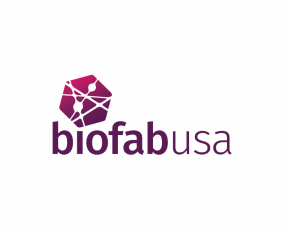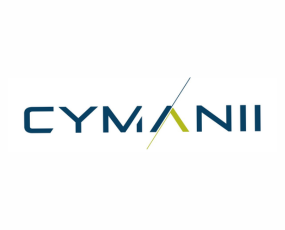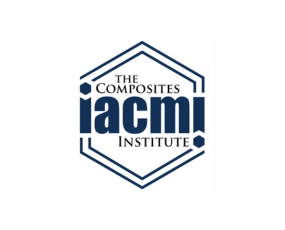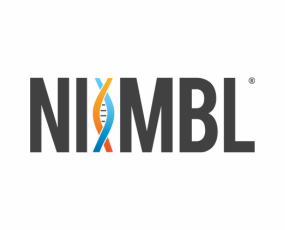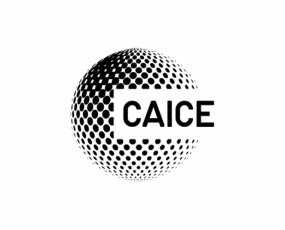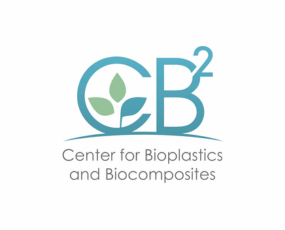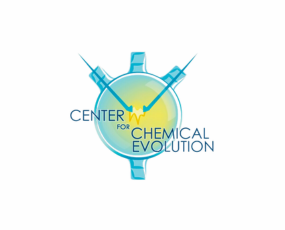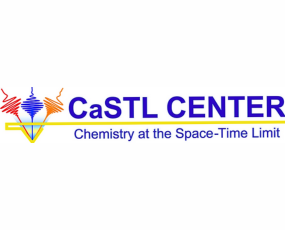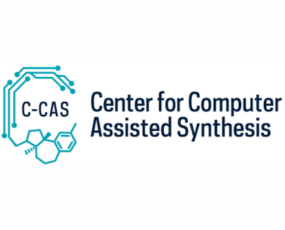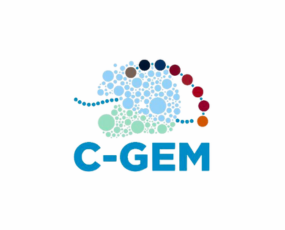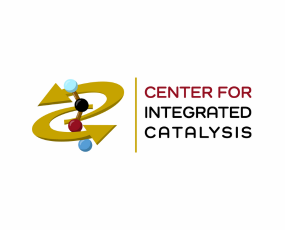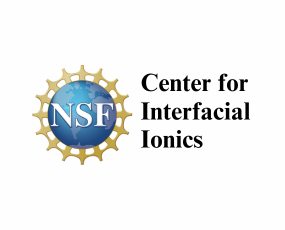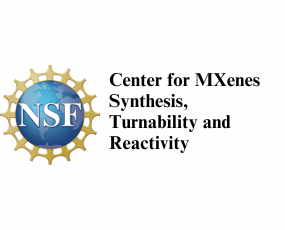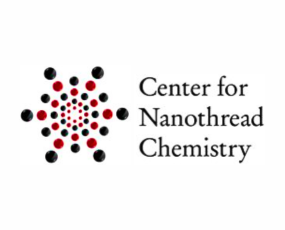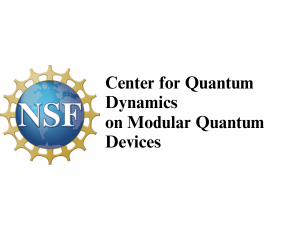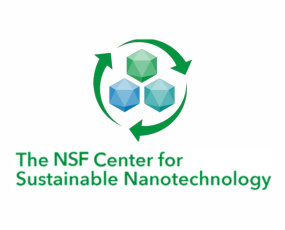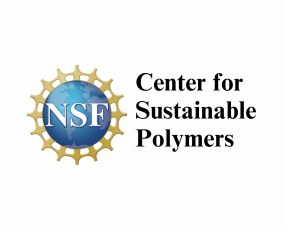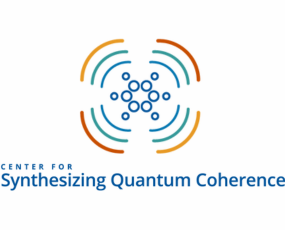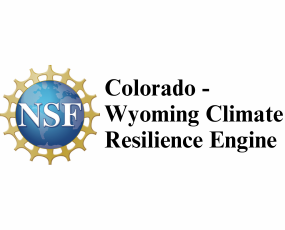Centers for Innovation
Dozens of institutions are tackling major, fundamental chemistry challenges. The Centers of Innovation produce transformative research, accelerate advanced manufacturing, and attract broad scientific and public interest. Explore collaborative institutions that are making long-term impacts across sectors and disciplines.
Search research centers making a sustained impact
Something missing? Contact us to request centers to be added to this page.
Advanced Functional Fabrics of America (AFFOA)
AFFOA is working to enable a manufacturing-based revolution by transforming traditional fibers, yarns, and fabrics into highly sophisticated, integrated, and networked devices and systems.
Maine, U.S.
Advanced Robotics for Manufacturing (ARM)
The ARM Institute's mission is to create and then deploy robotic technology by integrating the diverse collection of industry practices and institutional knowledge across many disciplines – sensor technologies, end-effector development, software and artificial intelligence, materials science, human and machine behavior modeling, and quality assurance – to realize the promises of a robust manufacturing innovation ecosystem.
Pennsylvania, U.S.
America Makes is a national accelerator and the nation's leading collaborative partner for technology research, discovery, creation, and innovation in additive manufacturing and 3D printing.
Ohio, U.S.
American Institute for Manufacturing Integrated Photonics (AIM Photonics)
AIM Photonics is working to accelerate the transition of integrated photonic solutions from innovation to manufacturing-ready deployment in systems spanning commercial and defense applications.
New York, U.S.
ARMI|BioFabUSA integrates innovative cell and tissue cultures with advances in biofabrication, automation, robotics, and analytical technologies to create disruptive research and development tools and FDA-compliant volume manufacturing processes.
New Hampshire, U.S.
Bioindustrial Manufacturing and Design Ecosystem (BioMADE)
BioMADE is working to build a sustainable, domestic end-to-end bio-industrial manufacturing ecosystem that will enable domestic bio-industrial manufacturing at all scales, develop technologies to enhance U.S. bio-industrial competitiveness, de-risk investment in relevant infrastructure, and expand the biomanufacturing workforce to realize the economic promise of industrial biotechnology.
Minnesota, U.S.
CESMII - the Smart Manufacturing Institute
Founded in 2016 in partnership with the Department of Energy's Office of Energy Efficiency and Renewable Energy, CESMII is the third Institute funded by Energy's Advanced Manufacturing Office. The Institute is accelerating Smart Manufacturing adoption by integrating advanced sensors, data (ingestion – contextualization – modeling – analytics), platforms, and controls to radically impact manufacturing performance through measurable improvements in quality and throughput.
California, U.S.
The Cybersecurity Manufacturing Innovation Institute (CyManII)
The Cybersecurity Manufacturing Innovation Institute (CyManII, pronounced sī-man-ē) introduces a cyber secure energy-ROI for energy-efficient manufacturing and supply chains that secures and sustains American leadership in global manufacturing competitiveness for decades.
Texas, U.S.
Electrified Process for Industry without Carbon (EPIXC)
EPIXC (Electrified Process for Industry without Carbon) aims to develop and scale innovative electric heating concepts for advanced manufacturing to reduce emissions, improve flexibility, and enhance the energy efficiency of industrial process heating using cost-effective solutions. These solutions will benefit underserved communities, be scalable, accelerate the U.S. transition to a zero-carbon future, and contribute to the goals of DOE's Industrial Heat Shot™.
Arizona, U.S.
IAC: Great Plains Center of Excellence at Oklahoma State University
In partnership with Northern Oklahoma College, Wichita State University, and the University of Nebraska, the center will advance the IAC network’s use of technology-driven assessments – including through use of mobile applications, drones, and virtual/augmented reality. This center will also deepen the IAC network’s partnerships with community colleges and Tribal communities.
Oklahoma, USA
IAC: Gulf Coast Center of Excellence at Texas A&M University
A national leader in remote and hybrid assessments, the center will accelerate the IAC network’s growing emphasis on industrial decarbonization, electrification, and resiliency planning.
Texas, U.S.
IAC: Mid-Atlantic Center of Excellence at Lehigh University
In partnership with West Virginia University, the center will expand the IAC network’s engagement with unions, trade schools, and community colleges, and develop new assessment methodologies to better serve small manufacturers.
Pennsylvania, U.S.
IAC: Southeastern Center of Excellence at Georgia Tech University
In partnership with Clark Atlanta University, Florida A&M University, and Kennesaw State University, the center will draw on these universities’ internationally renowned expertise in energy management, industrial electrification, and complex assessments.
Georgia, U.S.
IAC: Western Center of Excellence at San Francisco State University
In partnership with San Jose State University, San Diego State University, Laney College, and Cuyamaca College – a group of five leading minority-serving institutions – the center will apply their expertise in data-driven tracking to evaluate and improve manufacturer performance, renewable energy, energy demand management, thermal systems design, and waste and water management to enhance manufacturing competitiveness across the Western U.S.
California, U.S.
Institute for Advanced Composites Manufacturing Innovation (IACMI)
IACMI is committed to accelerating the development and adoption of cutting-edge manufacturing technologies for low-cost, energy-efficient manufacturing of advanced polymer composites for vehicles, wind turbines, and compressed gas storage.
Tennessee, U.S.
Lightweight Innovations For Tomorrow (LIFT)
LIFT is working to develop and deploy advanced lightweight materials manufacturing technologies. Take their Virtual Tour.
Mississippi, U.S.
Manufacturing times Digital (MxD)
MxD equips U.S. factories with the digital tools, cybersecurity, and workforce expertise needed to begin building every part better than the last, enabling its 300+ partners to increase productivity, win more business, and strengthen U.S. manufacturing. Take their Virtual Tour
Illinois, U.S.
National Institute for Innovation in Manufacturing Biopharmaceuticals (NIIMBL)
NIIMBL is working to enable more efficient and flexible manufacturing capabilities for existing and emerging biopharmaceutical products and develop a world-leading biopharmaceutical manufacturing workforce.
Delaware, U.S.
NextFlex takes critical steps toward furthering U.S. development and adopting the flexible hybrid electronics that will revolutionize how we live, work, and play.
California, U.S.
NSF Center for Adapting Flaws into Features
CAFF will develop transformative experimental and computational tools to understand intrinsically disordered systems and apply them to molecular materials that defy conventional approaches. Our team is uniquely suited to apprehend the multi-dimensional parameter space of intrinsically disordered systems at the cutting edge of interpretation and acquisition with spatially and temporally resolved chemical information. CAFF will cultivate new spectroscopic imaging capabilities by integrating computer vision concepts to achieve transformative temporal, spatial, and spectral resolution to confront blind spots in ensemble averaging. We will develop "smart" microscopy strategies where real-time analysis drives data collection to anticipate emergent functions. To leverage the broad capabilities within CAFF to generate definitive structure-function relationships, we will develop transformational data-driven strategies that integrate datasets from multiple sub-ensemble measurements with state-of-the-art theoretical tools from electronic structure theory, statistical physics, and dynamics.
Texas, U.S.
NSF Center for Advanced Molecular Architectures for Quantum Information Science
Using the rules of chemical bonding and tools of synthetic chemistry, spectroscopy, and theory, the Center will bring the hitherto unrealized molecular complexity to qubit discovery and enable substantially more flexible, scalable, and practicable quantum systems than those explored today. By leveraging chemical complexity, these QIS architectures can be tailored to meet various QIS needs, from sensing to computing.
California, U.S.
NSF Center for Aerosol Impacts on Chemistry of the Environment (CAICE)
The Center for Aerosol Impacts on Chemistry of the Environment (CAICE) focuses on improving our understanding of how aerosol particles impact the environment, air quality, and climate. Led by Prof. Kimberly Prather, UC San Diego Distinguished Chair in Atmospheric Chemistry, the Center's goal is to understand critical details regarding the chemistry of aerosols.
CAICE tackles the grand challenge of elucidating how the chemical complexity of atmospheric aerosol particles impacts our atmosphere and climate. A critical type of aerosol, sea spray, has tremendous chemical variability depending on ocean chemistry, biology, and physical factors such as waves and wind. CAICE has established a unique ocean-atmosphere interaction facility that replicates natural sea spray aerosol in a controlled setting, allowing for detailed fundamental studies of aerosol reactions.
CAICE has assembled an interdisciplinary team of scientists to accomplish this task: atmospheric, physical, biochemistry, analytical, and organic chemists, along with oceanographers and marine biologists. In addition to conducting innovative research, we are dedicated to improving science education and impacting the public through outreach.
California, U.S.
NSF Center for Bioplastics and Biocomposites (CB2)
The Center for Bioplastics and Biocomposites (CB2) is an NSF Industry & University Cooperative Research Center (I/UCRC) that brings together industry partners and university researchers who have a common interest in biobased plastics and composites. An I/UCRC center is primarily supported by industry partners and conducts industry-relevant research. CB2 has four university sites: North Dakota State University, Iowa State University, Washington State University, and the University of Georgia.
The goals of this center are threefold: (1) to improve the basic understanding of the synthesis, processing, properties, and compounding of bioplastic and biocomposite materials; (2) to develop reliable material characteristics data for industrial partners; and (3) to support large-scale implementation of renewable materials.
North Dakota, U.S.
NSF Center for Chemical Evolution (CCE)
The Centers for Chemical Innovation (CCI) Program supports research centers focused on significant, long-term fundamental chemical research challenges. CCIs integrate research, innovation, education, and informal science communication; they include a plan to broaden the participation of underrepresented groups.
Georgia, U.S.
NSF Center for Chemistry at the Space-Time Limit (CCI Chemistry at the Space-Time Limit)
The Center for Chemistry at the Space-Time Limit (CaSTL) is a multi-institutional NSF Center for Chemical Innovation. Its central goal is to develop the science and technology necessary to directly visualize the inner workings of individual molecules as they undergo chemical change.
NSF Center for Chemistry with Electric Fields (ChEF)
The grand vision of this CCI is to understand, control, and manipulate chemical reactions utilizing electric fields. Our overarching goal is to demonstrate that electric fields can completely alter the reaction trajectories and pathways, making transformations impossible under traditional conditions. Changing transition states by an external bias is the ultimate demonstration of controlling matter away from equilibrium and toward desired reactivity.
We will perform experiments where electric fields can originate from an external bias produced using nanoscale electrode gaps or from strategically placed charges within a catalyst. This research will chart a path to controlling the environment and electric field around reaction centers to accelerate desired reactivity and selectivity, developing reaction pathways and outcomes that are otherwise inaccessible by altering reaction kinetics and thermodynamics.
Our combined synthetic, measurement, and computational efforts are categorized into two interdisciplinary research thrusts, focused on two broad families of reactions:
Thrust 1: Electric Field Control of Isomerization and Pericyclic Reactions. Thrust 1 aims to provide a mechanistic and quantitative understanding of how electric fields can control reactions and focuses on two classes of reactions: isomerization and pericyclic reactions.
Thrust 2: Electric Field-Driven Coupling Reactions: Thrust 2 will investigate how an electric field can enable and control bond activation as the first step towards novel electric field-enabled coupling reactions.
New York, U.S.
NSF Center for the Chemistry of Molecularly Optimized Networks
The Center for the Chemistry of Molecularly Optimized Networks (MONET) is transforming polymer and materials chemistry by developing the knowledge and methods to enable molecular-level chemical control of polymer network properties for the betterment of humankind. We treat networks as complex chemical systems so that the full power of synthetic, physical, and theoretical chemistry is rationally directed toward overarching challenges in de novo molecular network design.
North Carolina, U.S.
NSF Center for Chemoenzymatic Synthesis
Nature's ability to employ highly evolved biological catalysts to generate diverse and complex molecules through selective reactions has inspired chemists for decades, leading to the field of biocatalysis. The potential societal impacts of biocatalysis are significant, yet chemists have only recently begun to leverage these efficient and selective natural processes. The Center for ChemoEnzymatic Synthesis seeks to develop unprecedented transformations and achieve new selectivity strategies by applying novel concepts in biocatalysis. These advances will allow the scientific community to address 21st-century challenges in producing new medicines and materials.
Illinois, U.S.
NSF Center for Computer-Assisted Synthesis
The vision of the Center for Computer-Assisted Synthesis (C-CAS) is to create a comprehensive platform for computational planning and optimizing synthetic pathways, predicting reaction performance, and addressing the selectivity (e.g., chemo-, regio-, stereo-) challenges inherent in complex molecule synthesis. C-CAS will also provide a forum for exchanging ideas between academia and industry, as well as computer scientists and chemists in this rapidly evolving field.
C-CAS collaborates with several industrial partners to promote using data-driven methods for applications in the chemical and pharmaceutical industry and information technology. Together, we identify and tackle real-world computer-assisted synthesis applications, generate new datasets and models, and provide internship and networking opportunities for C-CAS members. Current industrial collaborators include:
Indiana, U.S.
NSF Center for Genetically Encoded Materials
C-GEM is establishing a fundamentally new way to program chemical matter and transform how scientists design and produce materials and medicines. Using computation and experiment, C-GEM repurposes nature's protein-synthesizing machine–the ribosome and its associated translation factors–to biosynthesize genetically encoded, sequence-defined chemical polymers with unprecedented functions and activities. Our combined activities span the fields of chemical biology, synthetic biology, synthetic chemistry, structural biology, computational biology, and molecular biology and are highly collaborative. C-GEM implemented GEM-NET, a sophisticated data management system, to promote data sharing within and outside the team and with the industry, the NSF, and the public to catalyze these efforts. By fostering innovation at the chemical-biology-materials frontier, C-GEM is establishing a diverse chemical workforce, perfecting the integration of research with training, and captivating scientists and non-scientists alike.
California, U.S.
NSF Center for Integrated Catalysis (CIC)
The goal of the NSF Center for Integrated Catalysis (CIC) is to develop the fundamental chemistry to synthesize sequence-defined polymeric materials from pools of abundant feedstocks in a single reactor using spatially separated and switchable catalysts.
California, U.S.
NSF Center for Interfacial Ionics
The Center for Interfacial Ionics (CI2) is working to revolutionize the understanding of interfacial-ion-transfer (IIT) kinetics by coupling measurements of molecularly precise and tunable liquid/liquid and solid/liquid interfaces with advances in theory and computation to produce accurate theoretical frameworks of broad applicability. The CI2 IIT research platform aims to deliver a predictive understanding of modulating IIT rates via the chemical design of interface, solvent, and ion structure, enabling new ways to improve electrochemical technologies. Our broader-impacts agenda integrates tightly with the research by leveraging a diverse team across many types of institutions to cultivate a STEM pipeline. The CI2 team also aims to lead the world in fundamental electrochemical knowledge creation, train the next generation of diverse leaders in the electrochemical sciences that underlie critical technologies, innovate to bring science into products, disseminate transformative knowledge, and inform the public on science relevant to current global issues.
Oregon, U.S.
NSF Center for the Mechanical Control of Chemistry
The NSF Center for the Mechanical Control of Chemistry (CMCC) is an integrative research and training environment that brings together chemists, physicists, and engineers to establish a fundamental understanding of mechanochemistry – using mechanical force to drive chemical reactions. Mechanochemistry offers a powerful and versatile means for chemical synthesis, opening the door to new reactions and materials that cannot be made using traditional synthetic methods. While the effects of light, heat, and electric charge for driving chemical reactions are well understood, mechanical force as a controlling synthetic element is far less developed. To unveil the full potential of mechanochemistry, the CMCC aims to bridge critical knowledge gaps between the fields of chemistry and mechanics, which have limited the broad application of mechanochemistry as a core synthetic methodology. As mechanochemical reactions can often be carried out with little or no solvent and at lower temperatures than traditional synthetic approaches, the translation of knowledge in the CMCC from molecular-scale understanding to large-scale syntheses has the potential for significant technological and economic benefits globally, affording more sustainable approaches to the synthesis of chemicals and materials.
Texas, U.S.
NSF-Simons Center for Multiscale Biological Interfaces (CCI Multiscale Biological Interfaces)
The NSF-Simons Center for Multiscale Cell Fate Research (CMCF) connects scientists across mathematical, physical, and biological sciences to usher in a new era of biology.
California, U.S.
NSF Center for MXenes Synthesis, Tunability and Reactivity (M-STAR)
The NSF Center for MXenes Synthesis, Tunability, and Reactivity (M-STAR) is supported by the Centers for Chemical Innovation (CCI) Program of the Division of Chemistry. MXenes represent the most rapidly growing family of functional 2D materials, exhibiting great promise in the areas of energy storage, filtration and separation technologies, medicine, optoelectronics, and composite materials. Interest in MXenes stems from these crystalline metal carbides and nitrides having huge surface-to-volume ratios, robust metallic conductivities, and nearly limitless opportunities for surface functionalization. This makes MXenes uniquely powerful chemical building blocks for tunable functional materials. M-STAR will build knowledge and empirical data on how to manipulate and enhance the optical, electronic, and catalytic properties of MXenes by changing the composition of their 2D MXene sheets and attaching organic functional groups to the surface. Activities within this Center will include active engagement with industrial partners to promote MXene translation, STEM (science, technology, engineering, and mathematics) engagement through a cross-disciplinary rotation of summer schools and workshops, and the development of new activities for various science festivals and associated with the Chicago Museum of Science and Industry.
Illinois, U.S.
NSF Center for Nanothread Chemistry
The CNC brings together a team of chemists from Penn State, Cornell, NYU, and Brandeis universities to define the chemistry needed to produce a new class of organic molecules that have pervasive covalent bond connectivity in multiple dimensions.
Pennsylvania, U.S.
NSF Center for Polymers for a Circular Economy (PCE)
The NSF Center for Polymers for a Circular Economy aims to develop new ways to make polymers from inexpensive starting materials — carbon dioxide, biomass residues from agriculture and forestry, and oils from food waste. The ultimate mission is to achieve true polymer circularity with materials that can always be recycled.
South Carolina, U.S.
NSF Center for Quantum Dynamics on Modular Quantum Devices (CQD-MQD)
The NSF Center for Quantum Dynamics on Modular Quantum Devices (CQD-MQD) is supported by the Centers for Chemical Innovation (CCI) Program of the Division of Chemistry. The project is motivated by the vast gap between the problems for which a quantum computer could be helpful in chemistry and what can be simulated today with state-of-the-art quantum computers. The challenge is that most well-known quantum computing (Q.C.) algorithms have hardware requirements that far exceed the capabilities of current state-of-the-art quantum computers by several orders of magnitude. Closing that Q.C. gap is thus essential to make Q.C. technology finally available to studies of reaction dynamics and spectroscopy beyond the relatively simple proof-of-concept applications that have been developed. Demonstrating a new generation of quantum electrodynamics (cQED) platforms, in conjunction with quantum algorithms and fundamental studies of quantum reaction dynamics, has the potential to change the landscape of quantum simulations and lead to significant advances in chemistry with impact on other fields ranging from biology to materials science to engineering. Partnerships with the Stern College for Women at Yeshiva University, the Yale Pathways Summer Scholars program, and programs at Purdue and the University of Michigan will be developed to specifically establish an ecosystem for the development of a well-trained workforce in quantum information science and the modeling of molecular systems with quantum devices. The main goal of the CQD-MQD is to investigate chemical processes using modular 3D circuit quantum electrodynamics (cQED) platforms that can enable efficient realizations of molecular problems at the hardware level.
Connecticut, U.S.
NSF Center for Quantum Electrodynamics for Selective Transformations (QuEST)
One of the primary goals of QuEST is to investigate the fundamental mechanisms by which cavity polaritons alter reaction selectivity and thus enable chemical transformations that are not currently possible. Synthetic chemists have a suite of tools to control reaction outcomes (catalysis, photochemistry, pressure, temperature). Quantum light-matter interactions will provide a brand-new, orthogonal tool to change established synthetic "rules" and control selectivity. QuEST will explore the possibilities of controlling the relative distribution of products, breaking selective bonds in a single molecule, and delivering an electron to a specific substrate regardless of the relative redox potentials. These achievements will represent a true paradigm shift in synthesis with a broad transformative impact.
New York, U.S.
NSF Center for Selective C-H Functionalization
Aims to bring about a paradigm shift in the logic of chemical synthesis, one that has the potential to impact the construction of all organic molecules.
New York, U.S.
NSF Center for Single-Entity Nanochemistry and Nanocrystal Design
Our vision for the NSF Center for Single-Entity Nanochemistry and Nanocrystal Design is to address one of the biggest challenges in nanocrystal chemistry – the inherent heterogeneity of nanocrystals – by creating the scientific toolkit and chemical knowledge to separate individual nanocrystal responses from bulk property measurements. This research is supported by the NSF Centers for Chemical Innovation Program Grant #2221062 from the Division of Chemistry. Nanocrystals are a driver of innovation because they display properties distinct from their bulk form. For example, bulk gold appears a lustrous yellow, but gold nanocrystals can appear nearly any color depending on their specific size and shape. However, the way in which nanocrystals are made introduces variations from one crystal to the next in the same sample, meaning that each one may have different properties. This heterogeneity provides ample opportunity to discover new nanocrystals with valuable properties.
On the other hand, this heterogeneity makes the discovery of the nanocrystals with exceptional properties incredibly challenging, similar to finding the needle in a haystack. Conceptually, this challenge is similar to the screening challenge in the field of drug discovery and design, where there is a large experimental space from which a lead drug has to be identified. The conceptual similarities inspire CSENND and are creating the tools to accelerate the discovery and design of nanocrystals with exceptional properties and aims to transform how the chemical community handles nanocrystal heterogeneity. For Phase 1 of CSENND, these efforts will be directed toward nanocrystals for catalysis and chemical sensing.
Indiana, U.S.
NSF Center for Sustainable Nanotechnology
A multi-institutional partnership aimed at developing a molecular-level understanding of the fundamental chemical and physical processes that govern the transformations and interactions of nanoparticles in the environment.
Wisconsin, U.S.
NSF Center for Sustainable Photoredox Catalysis (SuPRCat)
SuPRCat is an NSF-funded Center for Chemical Innovation. The mission of SuPRCat is to transform chemical synthesis by designing powerful, industrially-relevant processes using sustainable photoredox catalysts based on organic or earth-abundant compounds and the energy from visible light.
Colorado, U.S.
NSF Center for Sustainable Polymers
The mission of the NSF Center for Sustainable Polymers (CSP) is to transform how plastics are made, unmade, and remade through innovative research, engaging education, and diverse partnerships that foster environmental stewardship. CSP participants aim to design, prepare, and implement polymers derived from renewable resources for a wide range of advanced applications and promote future economic development, energy efficiency, and environmental sustainability in the emergent area of biobased products.
Minnesota, U.S.
NSF Center for Synthesizing Quantum Coherence
The Center for Synthesizing Quantum Coherence (CSQC), an intensively collaborative enterprise, exists to create, sustain, and exploit quantum coherence to direct chemical dynamics and functionality. Imagine the revolutionary possibilities created by designing and realizing coherent pathways that use absorbed photons to localize energy, charge, or spin to perform targeted chemistry in warm, wet, and noisy condensed phase environments. This Center will establish new approaches to manipulate the structure and dynamics of matter, enabled by learning how to use the coherent motion of particles and excitation energy to direct and redirect chemistry.
North Carolina, U.S.
NSF Center for Synthetic Organic Electrochemistry
To make synthetic organic electrochemistry mainstream through the invention of enabling, green, safe, and economical new reactions, the demystification of fundamental electrochemical reactivity, vibrant partnerships with industry, education of a diverse set of scientists and engineers, and by engaging in community-wide education and outreach.
Utah, U.S.
NSF Engines: Central Florida Semiconductor Innovation Engine
Central Florida Semiconductor Innovation Engine (Florida), led by the International Consortium for Advanced Manufacturing Research (ICAMR, Inc.) (doing business as BRIDG), aims to play a critical role in supporting the nation's capability for semiconductor advanced packaging design and manufacturing, rooting a vital industry on American shores and securing national defense.
Florida, U.S.
NSF Engines: Colorado - Wyoming Climate Resilience Engine
Colorado–Wyoming Climate Resilience Engine (Colorado and Wyoming), led by Rocky Mountain Innovation Initiative Inc. (d/b/a Innosphere Ventures), aims to advance the region's research and commercialization efforts focused on sensing, monitoring and predictive analytic technologies for climate resiliency spanning methane emissions, soil carbon capture, earth sensing, water scarcity, wildfires and extreme weather.
Colorado and Wyoming, U.S.
NSF Engines: Great Lakes Water Innovation Engine
Great Lakes Water Innovation Engine (Illinois, Ohio and Wisconsin), led by Current Innovation NFP, aims to discover, develop and deploy innovative key technologies that attract water-intensive manufacturers to the region, recover valuable energy and mineral resources from wastewater streams, and foster workforce opportunities, all while maintaining environmental health.
Illinois, Ohio and Wisconsin, U.S.
NSF Engines: Louisiana Energy Transition Engine
Louisiana Energy Transition Engine (Louisiana), led by Louisiana State University, aims to enable a clean energy transition for the state by advancing research and commercialization efforts in the areas of carbon capture, the use of hydrogen as an alternative fuel, carbon dioxide as a feedstock, and sustainable water and sustainable manufacturing for clean energy to promote pathways to decarbonization across the state of Louisiana.
Louisiana, U.S.
NSF Engines: North Carolina Textile Innovation and Sustainability Engine
North Carolina Textile Innovation and Sustainability Engine (North Carolina, South Carolina, Tennessee and Virginia), led by The Industrial Commons, aims to advance the nation's capacity for environmentally sustainable textiles by advancing smart textiles and wearable technology, reducing carbon outputs and the number of textiles in landfills, and nurturing the development of new product lines that use circular methods.
North Carolina, South Carolina, Tennessee and Virginia, U.S.
NSF Engines: North Dakota Advanced Agriculture Technology Engine
North Dakota Advanced Agriculture Technology Engine (North Dakota), led by North Dakota State University, aims to create resilient and secure food systems in North Dakota by combining advanced genomics, climate modeling, nanoscale sensors and computer networks to monitor and improve the growth of crops via strong networks of stakeholders across the state — including bringing tribal, rural and farming communities intentionally and meaningfully into the process of co-creating a blueprint for the future of agriculture and workforce development.
North Dakota, U.S.
NSF Engines: Paso del Norte Defense and Aerospace Innovation Engine
Paso del Norte Defense and Aerospace Innovation Engine (New Mexico and Texas), led by The University of Texas at El Paso, aims to fuel the growth of dynamic aerospace and defense manufacturing in Paso del Norte, an eight-county region on the U.S.-Mexican border, by creating a platform that combines an emerging digital engineering paradigm and skilled workforce development.
New Mexico and Texas, U.S.
NSF Engines: Piedmont Triad Regenerative Medicine Engine
Piedmont Triad Regenerative Medicine Engine (North Carolina and South Carolina), led by the Wake Forest University School of Medicine, aims to cultivate breakthroughs in health care by providing the resources necessary to accelerate the transition of use-inspired regenerative medicine technologies into commercial products. Growth in this industry will help address long-term challenges related to retraining and upskilling the local workforce by developing a technical infrastructure for historically Black colleges and universities in the region to reduce disparities for underrepresented groups in science, technology, engineering and math fields.
North Carolina and South Carolina, U.S.
NSF Engines: Southwest Sustainability Innovation Engine
Southwest Sustainability Innovation Engine (Arizona, Nevada and Utah), led by Arizona State University, aims to equitably transform water security, renewable energy and net carbon emissions in the region by incentivizing new technology and governance, expanding infrastructure and capacity for knowledge translation, and preparing a diverse and highly skilled workforce.
Arizona, Nevada and Utah, U.S.
NSF Engines: Upstate New York Energy Storage Engine
Upstate New York Energy Storage Engine (New York), led by Binghamton University, aims to establish a tech-based, industry-driven hub for new battery componentry, safety testing and certification, pilot manufacturing, applications integration, workforce development and energy storage, including through material sourcing and recovery.
New York, U.S.
PowerAmerica is accelerating the adoption of advanced semiconductor components made with silicon carbide and gallium nitride into a wide range of products and systems.
North Carolina, U.S.
Rapid Advancement in Process Intensification Deployment Institute (RAPID)
The RAPID Institute serves as an American manufacturing leader, convening companies, universities, industrial research organizations, and national laboratories to focus on new technologies that maximize processes at the molecular level to save energy with every chemical reaction—adding up to significant savings on the manufacturing floor.
New York, U.S.
Reducing EMbodied-energy And Decreasing Emissions (REMADE)
The REMADE Institute focuses on reducing the cost of technologies essential to reusing, recycling, and remanufacturing materials such as metals, fibers, polymers, and electronic waste. The goal: achieving a circular economy in U.S. manufacturing.
New York, U.S.
University-Industry Demonstration Partnership (UIDP)
UIDP is a recognized leader in addressing issues impacting academic-corporate collaboration, providing a unique forum for our member representatives to find better ways to partner.
South Carolina, U.S.




